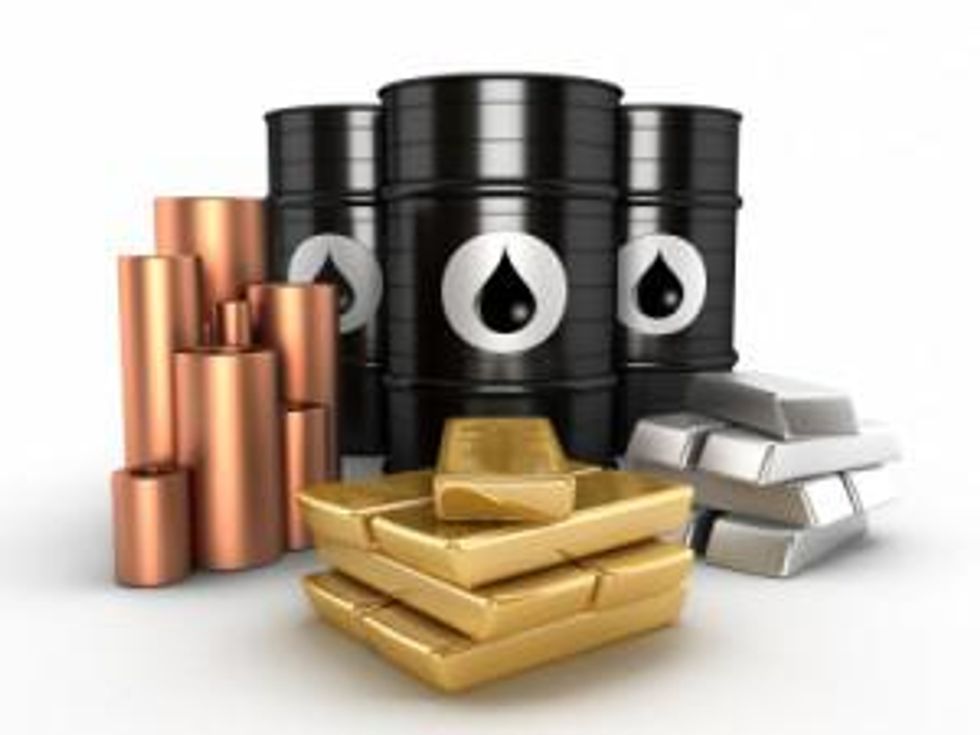Weekly Round-Up: Inflation Worries Offset China Optimism
Commodities fluctuated on mixed signals from the world’s second-biggest economy this week.
Commodities are ending the week mostly lower — although gold has held on to some of its gains — after reports of higher-than-expected inflation in China. That offset earlier optimism over strong export numbers from the country. China is the world’s largest consumer of mined metal.
On Thursday, trade figures for December showed that the value of the country’s exports surged 14.1 percent from December 2011. That shattered analysts’ expectations of a 4-percent increase. The latest figure also marks a sharp pick up from a 2.9-percent rise in November. Chinese imports also gained, rising 6 percent, well ahead of the forecast 3-percent growth rate.
The export figures were likely helped by a low benchmark a year earlier, as well as by exporters clearing out year-end orders. The Chinese customs office also called for caution. “China trade still faces uncertainties in 2013,” spokesman Zheng Yusheng said in a January 10 Financial Post article, “[b]ut we expect the situation will be relatively better compared to 2012.”
However, optimism over the higher trade numbers was tempered by a Friday report that China’s consumer price index (CPI) had climbed 2.5 percent from a year earlier, reaching a seven-month high. The CPI was also up from a 2-percent rise in November. The increase was mainly due to rising food prices, the result of poor weather in December delaying shipments. Investors were concerned that rising inflation would limit the Chinese central bank’s ability to stimulate the economy.
In morning trade Friday, Brent crude is down 1.68 percent, at $110.02 a barrel, while copper is down 1.38 percent, at $3.66 a pound. Gold is down 1.23 percent, at $1,657.40 an ounce.
Gold
Orosur Mining (TSXV:OMI) reported its latest quarterly results on Friday morning. In the three months ended November 30, 2012, the South America-focused miner and explorer’s revenue rose 17.3 percent, to $24.2 million from $20.1 million a year earlier. However, net profits fell sharply, to $1.2 million from $2.6 million. Even though production rose, the company’s cash cost per ounce increased 20.7 percent, to $1,215, due to lower ore grades at its Crucera pit. Orosur’s average selling price also declined 1.3 percent, to $1,694 per ounce.
Galantas Gold (TSXV:GAL,LSE:GAL) shares jumped this week after the company reported drilling results from its Omagh gold property near County Tyrone, Ireland.
The company’s drilling program consisted of 10 core holes drilled on the Joshua vein. Results included an intersection of 23.6 g/t gold and 38 g/t silver over a width of 2.4 meters at a depth of 51.4 meters. The intersection included 0.8 meters grading 64 g/t gold.
Abzu Gold (TSXV:ABS) announced the closure of a strategic investment consisting of 22.7 million units priced at $0.11 each. The company will use the $2.5 million proceeds to advance its Nangodi project in Ghana and for general corporate purposes.
Oil and gas
TransCanada (TSX:TRP,NYSE:TRP) has been chosen by Progress Energy (NYSE:PGN) — which was recently acquired by Malaysian state-owned energy company Petronas — to build a 750-kilometer pipeline serving the North Montney shale gas region near Fort St. John in the Canadian province of British Columbia.
The $5-billion line will carry gas to the recently announced Pacific Northwest liquefied natural gas (LNG) facility, which will convert it to a liquid for shipment overseas. The line’s initial capacity will be 2 billion cubic feet per day. At the same time, TransCanada will spend $1 to $1.5 billion to expand an existing line, which will give the new LNG facility access to additional gas supplies.
Royal Dutch Shell (LSE:RDSA,NYSE:RDS.A) has faced a series of setbacks in its attempts to drill for oil off the coast of Alaska. The latest came on December 31, when a drill rig broke loose and grounded on an uninhabited island. Earlier, the company was unable to attain US government approval for its containment dome, which is designed to contain spills, after the device was damaged during testing. Shell has spent $4.5 billion over seven years to start drilling in the region.
This week, US Interior Secretary Ken Salazar ordered a 60-day assessment of Shell’s drilling in the area. The government also said the review’s findings will influence future permitting decisions in the environmentally sensitive Arctic. “It’s troubling that there was such a series of mishaps,” said Salazar in a January 9 Bloomberg article.
Copper
Taseko Mines (TSX:TKO,NYSE:TGB) sold 23.4 million pounds of copper and 215,000 pounds of molybdenum in the fourth quarter of 2012. The company owns 75 percent of the Gibraltar open-pit mine in Canada. Taseko’s share amounted to 17.6 million pounds of copper and 161,000 pounds of molybdenum, compared to 16.1 million pounds of copper and 209,000 pounds of molybdenum in the previous quarter. Construction at the mine slowed mill throughput slightly in the latest quarter.
Capstone Mining (TSX:CS) shares rose this week after the company reported strong 2012 production from its Cozamin and Minto mines. During the year, Capstone produced a total of 82.8 million pounds of copper, slightly exceeding its goal of 80 million pounds. In the fourth quarter, Capstone produced 19.7 million pounds, down slightly from 22.6 million in the third quarter.
Securities Disclosure: I, Chad Fraser, hold no positions in any of the companies mentioned in this article.
